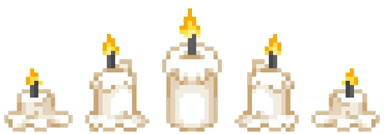Lenses of Change: Folk Horror
Dark floral poetry. An eerie sonnet, holding both ends of a life with its fists; it's a dueling sort of experience. Where a newfound awakening of the occulting world, opens your eyes to all around you, while simultaneously recognizing the innocence cased within our timely ends. Folk Horror, and the nihilistic dread felt within the folds of whatever ecological phenomena happening within the story, is actually one that encourages a fresh, buoyant reminder. A promise that calms our anxious questioning against some man-made quests for destruction. To soothe us, while it chases away the cruel dangling of a dystopian future, hiding beneath our floorboards or the bottom curtain of our beds - humans and the world are siblings of nature. The exploitation of one from another would be like witnessing a twin trying to sever the connective link that bonds them. Their beautifulness complements the other in the same mirror.
When exploring the mechanics of Folk Horror, and searching for tangible ways to see what actually separates the genre from just the gruesomeness exhibited on the nature channel, it's important to note how symbols inspire, support, and move a Folk Horror's tale further. How symbolism transcends any ghost story, and moves through sacred objects, with deliberate and defined meaning, which allows itself to find a home in the heart of whoever encounters the lore. Whoever welcomes the rhythmic pulse of nature's networking hands and is not repulsed, but open to the abundance of wisdom that was discarded during the first breath of this self-contrived time of scarcity. When images of collective resiliency, such as mushrooms or honey-bees, are symbolic (and literal!) examples of how to survive against an authoritative attempt to instill individualism, we can realize how much Folk Horror tells a tale of mutual care by properly celebrating and uplifting communities with linked arms and branches. To recognize that Folk Horror is not one of fascist ideology, encouraging a "going back to the land" mindset as a means to colonize the world once more, as critics previously interpreted past Folk Horror projects, but agree that nature could never be associated with hierarchal totalitarians when every aspect of an ecosystem is valued beyond production. For just its existence, enriching the earth. No difference from a steward, worm, or forest of billowy trees.
So why the 'horror' part of Folk Horror? Well, usually, what seems to differentiate Folk Horror from a vibey, low-stakes nature-centered movie, is that we're meeting the story at its reactionary climax rather than its normal, introductory greetings. The "effect" brewing, while we catch up on the "cause"; consequence seems to be a central theme explored by differing movie belief systems and felt as we witness their descent into decay. Take The Witch (2015)(dir. Robert Eggers) for example: Thomason, a daughter suffering from both starvation and religious fanaticism from her two, stubbornly prudish parents, expresses a journey from one unsuccessful Puritan relationship with the land, to another that celebrates the honest desires of both un-patriarchal peoples and of Mother Earth. If there ever was a sequel to The Witch, one could guess that it would look like Thomason learning how to properly forage for food in the woods and dismissing the exploitative, the-earth-must-work-for-me-not-with-me ideals, central to both her past society and the English's colonizing culture. The suffering, or "horrors" portrayed in The Witch is not just the literal pain Thomason's family endures from Black Phillip, but also the finalizing of their decision to divorce themselves from the land. Choosing death, one honored by their death cult, instead of being natural stewards of the earth.
Another consequence we see explored in Folk Horror is sacrifice. Children of the Corn, The Ritual, Blood on Satan's Claw, and many other movies, are amidst a dilemma (i.e. a lack of food, an un-revived demon, etc.) and our in search of either forgiveness or the power to right their wrongs, usually described as un-faithfulness. It's interesting to see that a lot of anxieties about evil, and the fears that we as a society have turned our back on innocence, are both reflected in Catholic/Christian horror like The Exorcist or The Conjuring series, and in our rudimental guesses about these fictional pagan-based ideologies. This is because Folk Horror rarely showcases people with actual and respectful relationships with the earth and the rest of life, but mutated versions of the same, biblical silly-goosery. Adapting the manipulative, power-hungry preacher as well as the solution to their most recent failings - a willing, or unwilling, sacrifice. One symbolizes a corruptive's fantasy of what or whom is "good" (i.e. The police officer in The Wicker Man, the young couple from Children of the Corn, etc.) and hoping it will appease whomever they worship. Therefore, Folk Horror is not just asking the question, "What if nature revolts back?" but actually answers it by exposing a hopeless "green" religion gone wrong; If people are not committed to equalizing themselves with the natural lushness of the world, and instead expect to dominate it, and others, into their will, then nothing but death, sacrificial or unnecessary, will come. Just like before.
Folk Horror can be a redirection from doomsday thinking. It can provide a means of metaphorical questioning, a "what if" satisfaction, but also averts responsibility to take care of creation, all of humanity and earth, back into your hands. Encouraging you to unlearn individualistic, power-hungry morality that was unnaturally instilled, and tends to the loving empathies needed to survive and co-harmonize with life. To detach yourself from a 'you' and start thinking of yourself as a 'we' that protects the beautiful life pulsing within all existence.
Posts